Welcome to the recap blog from Finished Vehicle Logistics North America 2025, which took place at Waterfront Beach Resort, Huntington Beach, California, on 8-10 April. The conference brought over 400 delegates and leaders, and featured discussion on real-world issues and offering innovative and implementable solutions in the inbound logistics, transportation, supply chain strategy and much more. While the conference has ended, our coverage has not - keep following this recap blog for more insights and interviews from the event, and register now for next year here!
April 11
As the conference came to a close, Christopher Ludwig, chief content officer at Automotive Logistics, wrapped up the final day of Finished Vehicle Logistics North America 2025 with key insights into electric vehicle logistics, charging constraints, quality control and strategic resilience amid uncertainty.
Watch the full wrap-up video now.
April 11
Vehicle logistics re-imagined: The differentiator in a hyper-competitive and volatile market
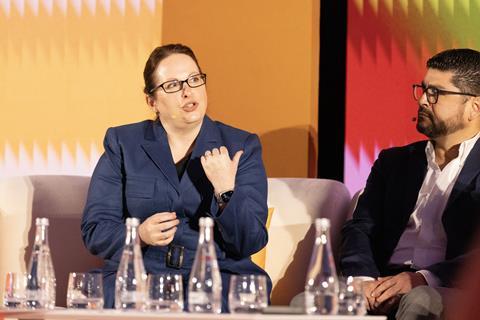
Just before the conference draws to a close, speakers from GM and D-Troy Logistics shared how their organisations are building more agile and responsive networks to stay competitive in an industry contending with unpredictable tariff regimes, cross-border congestion, and mounting EV requirements. Amy Paulsen, director, finished vehicle logistics at GM, emphasised that the OEM has been in a state of “constant agility” since the pandemic, navigating waves of internal and external disruption. But she argued that agility must be underpinned by radical transparency and openness with logistics partners.
She pointed to recent creative collaboration with a Mexican rail provider to improve car flow and storage flexibility amid mounting capacity constraints and tariff uncertainties. That cooperation resulted in new contingency processes that helped GM maintain vehicle flow during critical moments at the border.
Agustin Sustaita, chief commercial officer, D-Troy Logistics echoed the importance of close alignment and fast adaptation, agreeing that the crisis-mode mentality adopted in recent years—especially around border volatility—must become a permanent muscle. The “war room” mindset, Sustaita said, is no longer reserved for emergencies but is now a tool for daily operations and scenario planning.
GM’s logistics advantage, Paulsen said, lies in its vast network, which allows for flexibility across multiple modes and regions. Her team has also introduced new fulfilment centre models that improve customer choice while leveraging providers willing to experiment with longer dwell times and throughput-based optimisation.
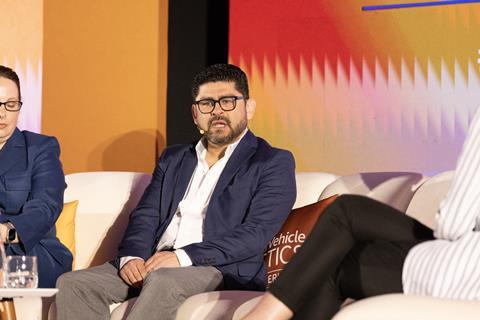
D-Troy Logistics is taking a similar approach, expanding its network of finished vehicle yards and consolidating flows closer to but not within congested border points like Laredo. Sustaita said his teams are developing lean-oriented, AI-supported processes that provide immediate value to OEMs, including dynamic rerouting between Mexico and US ports and supporting EV-specific needs.
Both speakers highlighted the importance of training and culture change to support innovation. Sustaita noted that D-Troy encourages its associates to “think out of the box” and regularly propose non-traditional solutions. Paulsen added that even at a large organisation like GM, a startup mentality can thrive.
With EV volumes accelerating across North America, panellists highlighted infrastructure and training gaps as priority areas. GM has already deployed mobile charging solutions to reduce the number of “bricked” EVs in its network, which Paulsen said had earned appreciation from rail partners.
But she stressed that mobile charging is only a stopgap, and there is a need for permanent infrastructure where there are high-volume fixed locations. Sustaita agreed, noting that in Mexico especially, logistics providers must plan for limited electrical infrastructure.
Both panellists highlighted the importance of industry forums in breaking down silos and building alignment across OEMs and providers. Paulsen described the ALC Impact Group, where OEMs and railroads meet to discuss shared challenges such as railcar shortages and border congestion. Sustaita pointed to successful collaboration with customs brokers as another area of progress, noting that improved document sharing and visibility across border stakeholders has sped up clearance processes.
In closing, both speakers underscored the importance of turning logistics into a source of influence within their organisations. Paulsen emphasised that digestible, relevant data is the key to gaining a seat at the table. Sustaita added that investing in AI and reinforcing field-level processes will be essential for resilience.
April 11
Vehicle logistics for an electric future
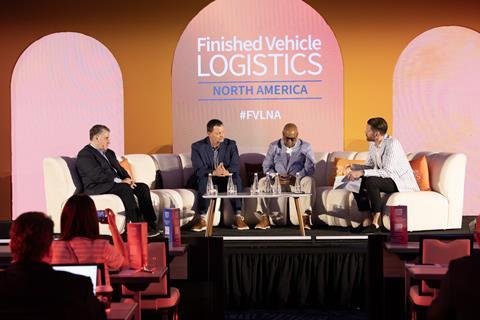
Vehicle logistics is fast becoming a critical lever in the success or failure of EV distribution. As we entered the last stretch of the Finished Vehicle Logistics North America 2025 conference, panellists outlined how EVs are reshaping finished vehicle operations — from transport mode constraints and equipment redesign to charging infrastructure and software visibility.
Thomas Shannon, finished vehicle operations manager, ports & logistics EV at GM, said the company had made significant strides in ramping up EV volumes, but logistics constraints were increasingly shaping delivery planning. “Batteries, batteries, batteries, it’s something that’s been the top of conversation, and the charging of the batteries and how you can do that at the level that’s going to sustain them in transportation when you’re pumping out 1,200 vehicles a day out of a plant, and there’s no time to charge them before they leave,” he said. “What we really learned was that our software services that we have in our vehicles have become critically important.”
The scale of this challenge has forced GM to deploy mobile charging solutions at logistics yards and railheads. “We realised quickly in early 2024 that we didn’t have the [charging] infrastructure we needed at out manufacturing facilities,” Shannon said. “Now we’re involved earlier in program launches to make sure that we have the appropriate charging equipment.”
Tony Stinsa, director of inbound and finished vehicle logistics at International (formerly Navistar), outlined the unique EV logistics issues for Class 4–8 commercial vehicles. With lower production volumes but significantly higher vehicle weights, International faces tough choices between lowboy trailers, driveaway, and ‘decking’ (piggybacking).
Stinsa explained that many commercial EVs cannot be decked because battery placement interferes with traditional saddle systems. “There’s no place to put the decking apparatus,” he said, adding it means there is a need to engage earlier with engineering teams to design trucks that can be shipped more efficiently.
Glovis America’s senior national manager for business development, Charles Franklin, emphasised that infrastructure issues span passenger and commercial segments. “Four out of six auto hauler trailers are incompatible with these vehicles so they’ve got to start planning to change the rail car designs,” he said. “The rail cars are going to have to learn how to deal with that as well.”
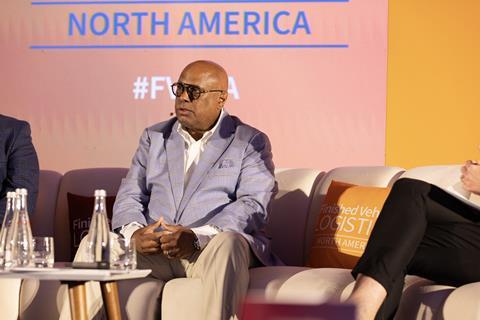
All three panellists stressed the need for better collaboration with OEM engineers — particularly to ensure future EVs are logistically viable.
GM uses OnStar and its vehicle software stack to monitor state of charge, especially 12-volt battery levels. International disconnects batteries for vehicles in long-term storage, particularly for commercial trucks stored for months at a time. However, Stinsa warned this isn’t a scalable solution in most EV logistics environments.
Franklin also highlighted the lack of universal fire mitigation strategies and the need for better planning, especially as more EVs are stored indoors or at high-density sites.
For all the complexity, each panellist agreed that vehicle logistics professionals are rising to the challenge.
“Finished vehivle logistics is impressive in its nimbleness and adaptability,” said Stinsa. “We’re the shock absorber that takes up for all the other sins and we’re kind of the last thing standing between revenue recognition or not for the OEM.” But, FVL needs to be brought into vehicle planning earlier in the process.
Franklin added: “We’ll ship whatever you build — I just want you to be open on what your constraints are, and then I can make it happen.”
April 10
Step away from the sessions and into the conversations. Whether it’s a quick chat over coffee or a deep dive into shared challenges, this is your chance to build relationships, swap ideas and spark collaboration. The insights continue offstage – see who you bump into!
April 10
Stepping up quality standards
Day two kicked off with a deep dive into how OEMs, LSPs and technology providers are collaborating to improve vehicle quality across a volatile logistics chain. Amy Paulsen, director of finished vehicle logistics at General Motors, set the tone: “The standards are good – how we get there needs to change.” With heavier EVs like the Hummer and Cadillac IQ, GM has had to rethink rail chalking, trailer design and securement standards. Paulsen emphasised the critical need for a “chain of evidence” across all quality touchpoints, saying, “Where we fail in claims is where information is missing.”
For Yanni Arvis, CEO of DRS Group, transparency is survival. “We’re never called in on a good day,” he said. Preparation, communication and real-time data are essential to delivering under pressure. “The more you prepare upfront, the easier it is to handle the unknown.”
Yannic Hansen, delivery manager at INFORM, and Gary Davis, VP of business development at Nationwide Auto Services, reinforced the message: real visibility comes from human and machine collaboration. “AI is a tool – not a replacement,” said Hansen. “Humans still drive quality.” Perfect execution isn’t just about tech, it’s about people, trust and data that connects the dots.
Paulsen concluded, “We need quality at every handoff, especially when volatility is the norm.”
April 9
As the sun begins to set over the California coast, we wrap up a powerful first day at Finished Vehicle Logistics North America 2025 – a day packed with insight, collaboration and a shared drive to transform outbound logistics across the region.
From the opening keynote and panel sessions, attendees explored how OEMs and logistics partners are building faster, more flexible and efficient vehicle supply chains in the face of rising production volumes and ongoing disruption. Key sessions today tackled critical topics such as capacity and network planning, digitalising yard operations, tackling the trucking crunch and managing the rapid rise of EV logistics across borders, especially between the US and Mexico.
Delegates will join for the FVL North America Dinner Reception, where they can continue their conversations with a drink in hand and great food on the table – set against the backdrop of the Californian evening sky. It’s the perfect chance to reflect on the day’s discussions and build new connections that will carry forward into tomorrow.
And there’s more to come! Day two kicks off with a focus on quality control, collaboration and EV logistics.
Stay with us on the FVL North America 2025 Live Blog for more insights, updates and expert voices shaping the road ahead.
Watch the wrap-up of day one here!
April 9
Vehicle sales outlook amid economic and policy shocks
For the last session of day one, Patrick Manzi, chief economist at the National Automobile Dealers Association, delivered a sharp, often candid breakdown of the shifting economic and political landscape surrounding North American vehicle sales. Despite a robust March, driven by pre-tariff buying sprees, Manzi warned that the road ahead could get bumpy. “March might be the high watermark,” he said, noting the surge came before sweeping new tariffs upended the market.
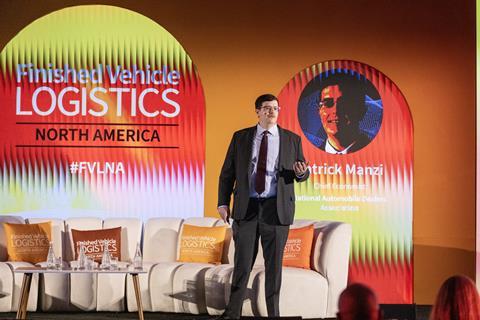
Manzi spotlighted a storm brewing: weakening consumer sentiment, tighter credit, rising subprime delinquencies and policy-driven inflation. “Consumers are holding back,” he said. “There’s growing fear – people are nervous about big purchases, and businesses are hesitant to invest.” He expects the new auto tariffs to raise average vehicle prices by $3,000–$12,000, impacting everything from financing to insurance premiums. “Every car sold in the US will feel the price impact – directly or through its components,” he said.
He also stressed the unintended consequences: affordable vehicles – often built in Mexico – could disappear, and US plant capacity mismatches may delay reshoring ambitions. As Manzi put it: “You can’t flip the switch and start building hybrids or small cars overnight.”
While BEVs are stagnating, hybrids are surging in popularity. Yet infrastructure and affordability remain barriers. “EVs need to be as easy to charge as gas cars are to fill,” he said. “And battery costs still need to come down.”
His forecast? A sales range of 15–16 million units, down from earlier optimism. “Cooler heads could change that,” he noted. “But uncertainty is the only constant right now.”
April 9
Predict, prevent, protect
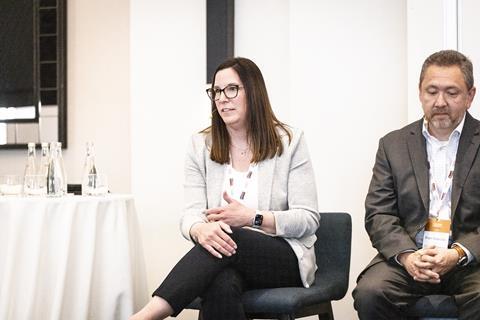
As vehicle complexity and EV volumes surge, the margin for error in logistics narrows. In a panel laser-focused on quality, experts from General Motors, Rivian and Autos in Motion shared how they’re leveraging collaboration, data and evolving standards to drive down damage rates and improve end-to-end performance.
“We’ve made strong progress by holding suppliers accountable, using data to pinpoint hotspots, and creating monthly feedback loops,” said Melissa Tremp, quality and claims supervisor at General Motors. Her colleague Brian Watanabe emphasised a shift toward a fully documented “unbroken string of evidence” across touchpoints to eliminate finger-pointing and surface root causes.
For Ryan Kooistra, manager of quality and claims at Rivian, adapting rail securement practices for heavier, wider EVs is a priority: “We need to move beyond ICE-era standards. One chalk in the wrong spot can mean a totalled vehicle.” Meanwhile, Jeremy White, VP of operations at Autos in Motion, underscored the human factor: “Our veteran drivers retrain constantly. It’s about loading smarter, not faster.”
The session also tackled tech’s limits. “AI still has a long way to go before it can truly predict and prevent damage,” said Kooistra. The shared takeaway? Prevention starts with partnership – and transparency at every handoff.
April 9
Maximising rail freight for faster, leaner deliveries
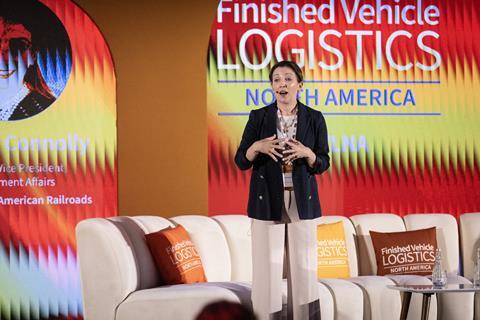
Melissa Connolly, assistant vice president of government affairs at the Association of American Railroads, opened the session by highlighting the deep-rooted link between rail and the auto industry. “Railroads move about 75% of the cars and light trucks sold in the US,” she said, stressing the vital role of rail in both parts and vehicle movement across borders. With 38% of US rail traffic tied to international trade – and one-third of that automotive – Connolly called for investment certainty, smarter regulation and trade policy clarity. “Rail is the only mode that owns, maintains and invests in its infrastructure,” she emphasised, citing $26.8 billion in Class 1 railroad investments in 2023 alone.
She warned that rising tariffs, cross-border fees and policy instability could impact the finely tuned North American supply chain. “The system is resilient – but it’s not infallible,” she said. Lessons from Covid-19, such as workforce shortages and yard congestion, are now shaping how railroads prepare for volatility: “It all comes down to communication.”
In the panel, Connolly was joined by Sarah Slazinski, assistant vice-president of automotive at Canadian National. Slazinski emphasised that rail performance is improving – with over 90% success in forecast-based delivery. “We’re one to two days faster than a year ago,” she noted. Addressing EV growth, she pointed to case-by-case adaptation and new industry committees to define infrastructure needs.
Both speakers called for regulatory modernisation and digital transparency. “Visibility and automation are our top priorities,” said Slazinski, who also highlighted Canadian National’s investment in AI-powered inspection portals and robotic yard management. Connolly echoed that vision, pushing for a performance-based regulatory framework: “We need to unlock innovation – not wait on outdated waiver processes.”
April 9
Take a moment to recharge, grab a coffee and connect with fellow attendees. We’ll be back shortly with more insights and discussions – don’t stray too far!
April 9
Pedal to the metal
Leading voices from OEMs and haulers came together to unpack the strategies driving flexibility, data integration and collaboration across the vehicle delivery ecosystem.
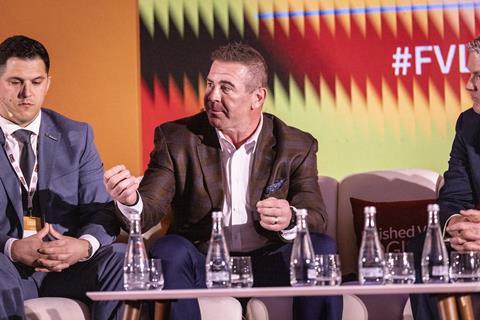
Ben Shain, senior manager of vehicle logistics at Nissan North America, set the tone, describing a stable but cautious outlook. “Maybe it’s the calm before the storm,” he said, pointing to efforts to improve ETA accuracy, reduce pipeline ‘bubbles,’ and push delivery performance using predictive analytics and direct engagement with carriers. “If you’re going to hand off the baton, the next person can’t be standing still.”
Joe Haney, executive vice president at Accelerated Services, reflected on industry resilience amid endless disruption: “Every time we think it’s going to level out, something else hits. We survive by building trust and staying adaptable.” His team is now investing in suggestive AI, balancing real-time insights with human experience.
For Anton Balta, chief logistics officer at CRC Transport, success hinges on smarter load matching and digital integration. “It’s never been a better time to be agile,” he said. CRC is using geofencing, AI-assisted dispatch and early forecasting to reduce dwell and boost driver productivity.
Royce Neubauer, founder and CEO of Auto Hauler Exchange, called for system-wide transparency. “We’ve got to weaponize data,” he said, advocating for predictive analytics to drive capacity decisions. “The biggest block is fear of change – but collaboration can unlock cost savings and growth.”
The panel closed with a call to solve the industry’s shared driver shortage. “This is not a trucking problem – it’s an industry problem,” said Neubauer. “We need to make this profession attractive again, and that starts with technology, respect and better working conditions.”
April 9
After a deep dive into digitalising operations and enhancing vehicle visibility during this morning’s interactive workshop, it’s time to take a well-earned break.
Enjoy lunch – sponsored by FreightVerify – and take the opportunity to explore the exhibition, network with peers and discover tools driving smarter, more transparent finished vehicle logistics. It’s the perfect moment to recharge while continuing conversations from the session floor.
We’ll be back shortly with more high-impact panels, starting with a discussion on collaborative approaches to capacity and network planning, followed by sessions on Mexico’s evolving role in the vehicle logistics landscape and tackling the trucking squeeze. Stay with us for more insights and strategies shaping the future of outbound logistics in North America.
April 9
Workshop cuts through the AI hype
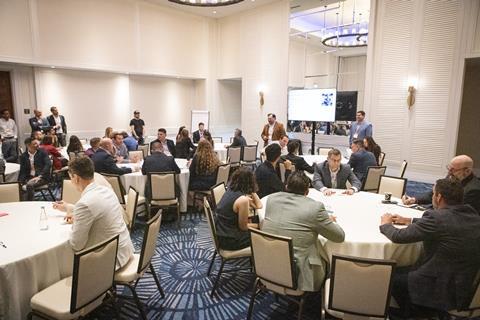
In a hands-on session, Volkswagen Group of America port managers Elliot Hughes and Paul Virgin led attendees through a creative, interactive workshop focused on separating fact from fiction in artificial intelligence (AI). “AI is all over the news,” Virgin said, “but there’s still confusion about how to actually apply it in real operations.”
Using group prompts and gamified exercises, participants explored key AI concepts – from the need for clean, structured data (“the data lake”) to the risks of algorithmic noise. “Half the ideas AI generates may be hallucinations,” Virgin noted, reinforcing that human oversight remains critical.
The session highlighted the importance of data credibility and having internal “data sheriffs” who can manage AI inputs and outputs. “Do you have someone in your organisation playing that role?” Hughes asked, challenging teams to reflect on their structure.
Participants also brainstormed ways AI could improve logistics, including reducing wasted moves and better forecasting. By plugging their insights into Microsoft Copilot, the group saw a live example of how AI can distil sprawling input into focused, usable takeaways.
As Hughes concluded, “It’s about using AI to work smarter – not just faster.” The hype surrounding AI is real, but so is the opportunity.
April 9
Increasing multimodal and flexibility for vehicle logistics
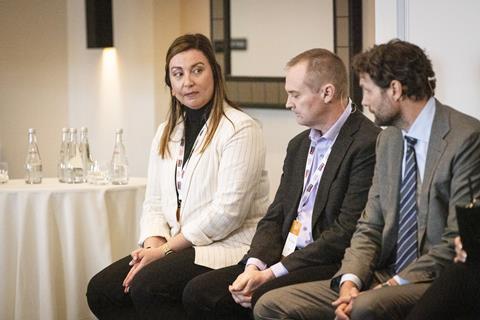
From port congestion to EV rollout challenges, the breakout panel of the afternoon explored how multimodal strategies, infrastructure investment and real-time visibility are becoming essential tools for resilience.
Tim Francis, manager of outbound vehicle logistics operations at General Motors, emphasised fast, coordinated responses to daily disruptions: “It’s about how we recover – whether that’s shipping extra tomorrow or tapping into dedicated fleets.”
Kristian Hansen, senior manager, finished vehicle infrastructure development at Glovis America, discussed growing their network with inland processing centres and additional ports. “More options mean more levers to pull when challenges arise.”
Krista Castro, CEO of Castro’s Superior Services, spotlighted last-mile adaptability: “If we have accurate information early, we can redirect fast. Communication and transparency are everything.”
Sarah Hathaway, GM’s finished vehicle network engineering manager, pointed to smarter planning powered by data and design. “We’re integrating future vehicle specs, facility needs and digital visibility – because if it doesn’t work in execution, it doesn’t work.”
Together, the panel underscored that building a truly flexible logistics network means designing for change – before it forces your hand.
April 9
Meeting complexity head-on
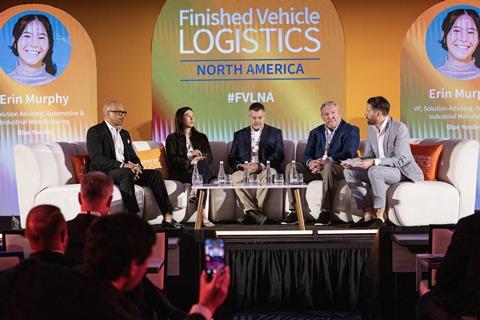
Faced with rising uncertainty and mounting logistical complexity, a panel convened to share strategies for engineering flexible, data-driven networks. Todd Myers, director of finished vehicle logistics Nissan Group of North America, emphasised the need to balance strategy with operational realities: “You have to understand the total delivered cost – not just what looks good in one silo, but what’s profitable overall.” For Nissan, that means dynamic modelling based on real-time data, but grounded in dialogue and cross-functional alignment.
Adrian Jennings, chief product officer at Cognosos, pointed to the critical role of “ground truth” – hyper-granular, real-world data that helps supply chains react to unexpected dwell and disruption. “Nothing works like it’s designed on paper,” he said, underscoring the need for adaptive visibility tools.
Darren Acker, director of finished vehicle logistics operations at Glovis America, highlighted a shift toward inland processing to reduce port congestion and improve speed to market. “We’re designing networks for what might go wrong,” he said, referencing new scenario planning practices.
Erin Murphy, VP, solution advising at Blue Yonder, reinforced the shift toward real-time optimisation, noting, “KPIs are evolving – from rigid metrics to resilience, responsiveness and speed of resolution.”
The panel agreed: AI and scenario planning are critical, but without clean, connected data and cross-functional visibility, optimisation efforts fall short. As Jennings put it, “It’s not about the old plan vs. new plan – it’s about reacting to what’s really happening, in real time.”
April 9
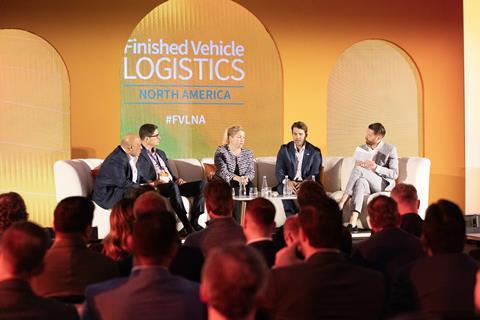
After an energising welcome from Automotive Logistics’ chief content officer Christopher Ludwig, the conference kicked off with a powerful opening panel exploring how OEMs like Volkswagen Group of America and major logistics providers are reshaping North America’s finished vehicle supply chain.
Speakers shared strategies for building faster, more flexible and cost-efficient logistics networks – from investing in AI and multimodal tools to help the industry stay agile in the face of disruption.
Delegates will break for coffee, explore the exhibition and connect with peers and potential partners during the networking break.
April 9
Accelerate, adapt and align
In a candid and compelling keynote, Anu Goel, executive vice-president, group service and after sales, Volkswagen Group of America, detailed how his team tackled a logistics crisis that left 53,000 vehicles stranded in Mexico – $1.6 billion in inventory with no plan to move them. “We titled it WTF1,” Goel said. At the time, finished vehicle logistics was managed separately within the group across the US, Canada and Mexico, leading to fragmented metrics, misaligned priorities and poor cross-border visibility. “Each country had different KPIs – and even different definitions for the same terms,” he explained.
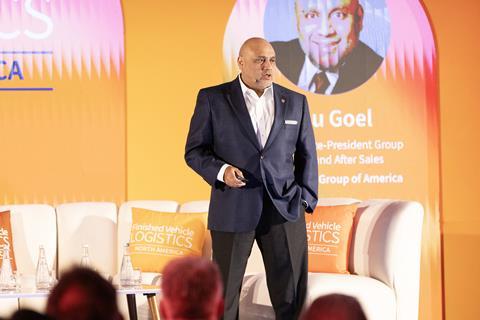
Goel pushed for a structural overhaul, introducing a regional logistics model, appointing a cross-border coordinator, and aligning performance indicators. One of the moves was shipping vehicles via containers – a method previously dismissed as too costly. “It was expensive, but cheaper than leaving $1.6 billion stuck on the ground,” he said. The team also opened a new port in record time, negotiated the longest-ever rail contract for VW Group North America, and introduced “war-room-style” daily coordination. But the hits kept coming: quality holds, stop-ships, a software block, the Baltimore bridge collapse. “That was WTF2,” Goel quipped.
With new tariff regimes threatening millions in added cost per vessel, Goel emphasised a calm, data-driven mindset. “There is no on-off switch for the supply chain. Every week you hold it, it takes three to four weeks to recover,” he warned. His message: don’t wait for clarity – plan amid chaos. “Speak with data, not emotion.”
Watch: Anu Goel on the Red Sofa at FVL NA 2024
The panel that followed dove into how industry leaders are embracing transparency, agility and tech-driven tools to navigate disruption. Christine Krathwohl, SVP and president of distribution at FreightVerify, introduced “Inventory View,” a real-time visibility platform for ports, processors and dealers. “We’re not just showing where VINs are anymore – we’re showing when they’ll land and enabling decisions before the crisis hits,” she said.
John Perkovich, president of RPM, focused on proactive capacity planning. “If you wait for perfect data, it’s already too late,” he warned. By triangulating assets and forecasting loads earlier, RPM helped OEMs avoid end-of-quarter pileups.
Christoph Seitz, global vice president, finished vehicles at DP World, shared: “We’ve been in crisis mode since 2020. Our approach is non-panic – investing in infrastructure, free trade zones and cars in containers to make trade flow.”
April 9
Get ready to re-imagine logistics: Creating a faster, agile, more competitive vehicle supply chain
Christopher Ludwig, chief content officer, Automotive Logistics & Ultima Media, opened the conference with a call to “reimagine logistics” in a time of rapid, unpredictable change. Referencing escalating trade tensions and tariff impacts, Ludwig set the stage for deep industry reflection and adaptation, emphasising agility and innovation in finished vehicle logistics. “We don’t know what’s coming next,” he admitted, “but we do know the status quo won’t hold.” Ludwig highlighted the importance of dynamic network planning, real-time data integration and cross-partner collaboration, encouraging attendees to look beyond crisis and identify new opportunities through AI, machine learning and improved visibility. “If you can be one day ahead of the competition,” he said, “you’re already winning.”
April 8
As the 2025 Finished Vehicle Logistics North America Conference got underway in Huntington Beach, Christopher Ludwig, chief content officer at Automotive Logistics, set the tone with reflections from the welcome reception and opening day activities. Amid trade policy shifts and tariff concerns, logistics leaders shared a mood of resilience and forward-thinking.
Watch the welcome message from Christopher Ludwig and get a preview of what to expect across the conference – from supply chain visibility and network optimisation, to digitalisation and multimodal logistics strategies.
April 8
FVL North America 2025 gets into gear with a day of networking, sunshine, and friendly competition at the Pre-Conference Golf Day, hosted at the breathtaking Monarch Beach Golf Links in Dana Point. Sponsored by KHS Global Automotive Solutions, this long-standing tradition kicks off the event with a relaxed and engaging opportunity for finished vehicle logistics professionals to connect outside the conference room - building relationships that fuel collaboration throughout the week.
Following the golf, attendees will gather for the Welcome Drinks Reception, where leaders from OEMs, logistics providers, and technology partners will reconnect and begin conversations around the key challenges and transformations driving the sector. From rail and port congestion to the rising complexity of EV logistics, capacity planning, digitalisation, and regulatory pressure, the 2025 agenda is packed with insights into how the industry can scale smarter, greener, and more resilient vehicle logistics networks across North America.
As we prepare for two days of keynotes, panels, and interactive sessions in Huntington Beach, the golf day and reception provide the ideal setting to spark discussion and set the tone for what promises to be an impactful and forward-looking conference.
Stay tuned to the FVL North America 2025 Live Blog for updates, insights, and highlights throughout the event!
April 8
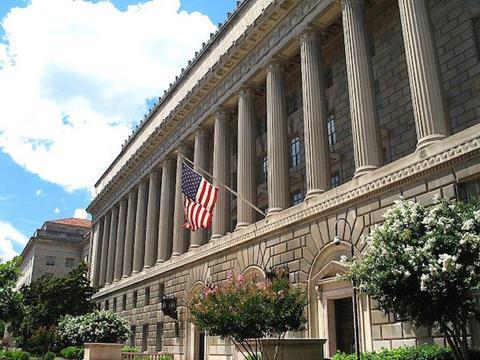
Global carmakers and auto parts suppliers are trying to gauge what this week’s enforcement of 25% tariffs by the US Trump administration on their vehicles will cost and how that will accrue when tariffs on parts are added no later than May 3.
Will tariff-stacking affect OEMs and suppliers?
We’ve broken down the tariffs and product groupings according to the latest information available, which you can find here.
April 8
As trade talks continue over Trump’s vehicle import tariffs, OEMs including JLR, VW Group and Stellantis are attempting to mitigate the effects by pausing production and exports to the US.
For the latest information, follow our infographic timeline of events here.
March 31
Discussions at Finished Vehicle Logistics North America 2025 are sure to focus on trends in the North American FVL market, such as mergers and acquisitions, and increasing digitalisation.
Recently, we have seen OEMs implementing Control Towers, and in some cases gaining more control over FVL flows, as can be seen in the case of Volkswagen North America trying to reduce costs in finished vehicle logistics and its raw materials. A rise in mergers and acquisitions is also happening as the industry consolidates - with the recent example of Jack Cooper winding down operations in a turbulent market.
Read more in our analysis for trends in FVL here
March 31
This year’s event comes at a pivotal moment as the industry works to ramp up vehicle deliveries in the face of production growth, rail and port congestion, labour shortages, and the shift to electric vehicles. Over three days, the event will explore how OEMs, logistics providers, rail and ocean carriers, service companies, and technology innovators are investing in smarter, more connected, and more resilient logistics operations.
Topics on the agenda include EV logistics and infrastructure, rail and trucking capacity, yard and compound management, supply chain visibility and digital tools, and sustainability and ESG frameworks. Attendees can expect a mix of insightful keynotes, interactive panels, workshops, and valuable networking opportunities.
The speaker line-up features senior executives from across the industry, including Anu Goel from Volkswagen Group of America, Amy Paulsen from General Motors, Todd Myers from Nissan North America, Tony Stinsa from International, and Patrick Manzi from the National Automobile Dealers Association, among others. They are joined by experts from leading logistics and service providers, including DP World, FreightVerify, DRS Group, Blue Yonder and many more.
Check out the highlights video from the Finished Vehicle Logistics North America event in 2024!
Topics
- AI & Predictive Analytics
- Analysis
- Cross-Border Logistics
- Digitalisation
- Electric Vehicles
- EV & Battery Transportation & Handling
- features
- Finished Vehicle Logistics
- Fleet & Route Optimisation
- FVLNA25
- Kaizen & Continuous Improvement
- Lean Logistics
- Logistics service provider
- Nearshoring
- North America
- OEMs
- People
- Policy and regulation
- Ports and processors
- Rail
- Region
- Risk Management
- Road
- Shipping
- Suppliers
- Supply Chain Planning
- Trade & Customs
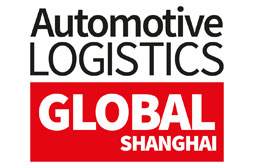
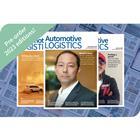


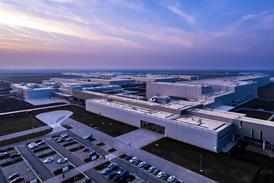
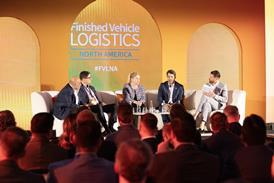
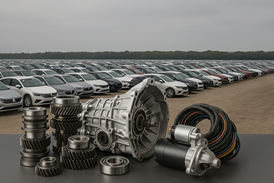

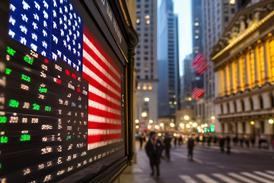
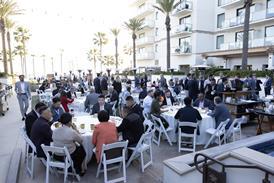

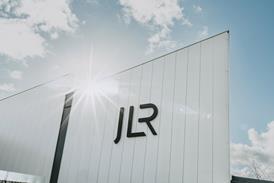
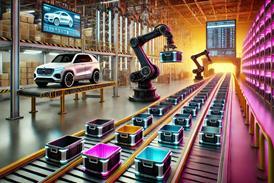
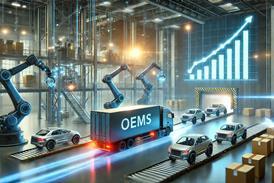
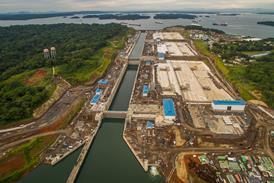
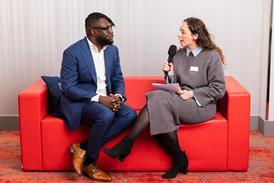





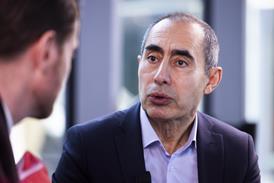
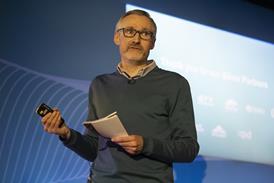

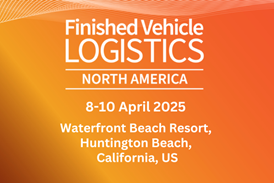
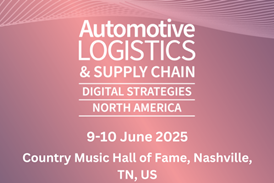
![Global[1]](https://d3n5uof8vony13.cloudfront.net/Pictures/web/a/d/s/global1_726550.svgz)
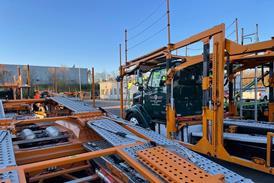
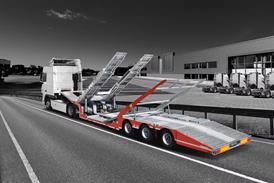
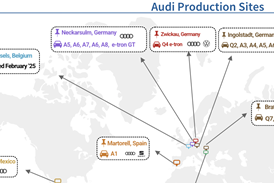

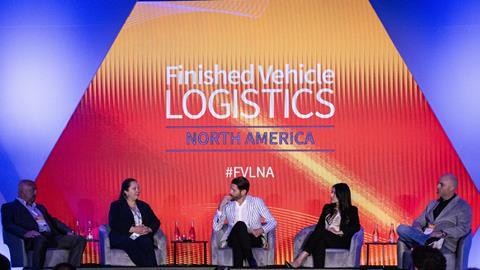
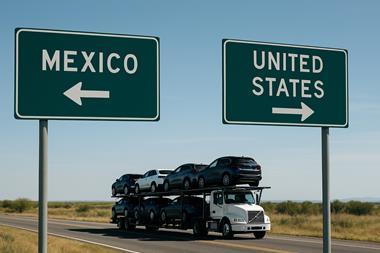

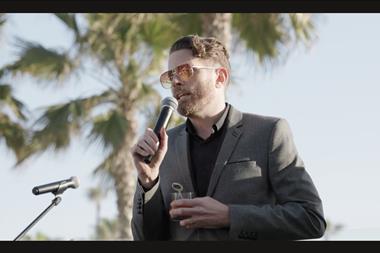
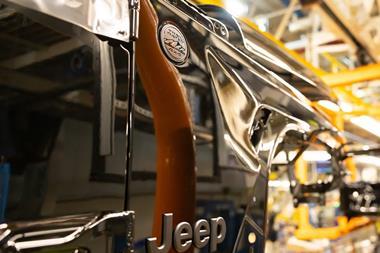
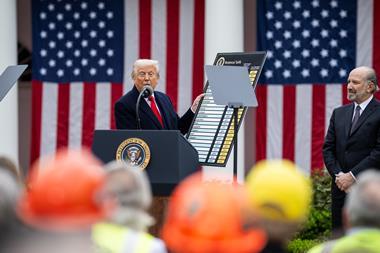




No comments yet